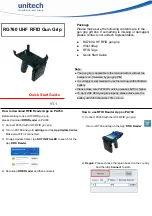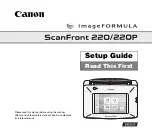group, while others have access to many talk groups. The
talk group (s) each radio can access is called the radio’s
affiliation (s).
In a Type II system, when someone uses their radio, only
the radio ID is transmitted when PTT is pressed, whereas
in a Type I system the radio ID and its current affiliation are
both transmitted when PTT is pressed.
Why the difference? Type II systems are slightly more
advanced because the central computer maintains a
database which is used to determine each radio’s
affiliation (s). Changes to a Type II system are easier than
Type I because the system manager only need update the
database instead of reprogramming individual radios.
Another difference between the systems is that Type I
systems are arranged in a Fleet-Subfleet hierarchy. For
example, it’s possible for a city using a Type I system to
designate 4 Fleets, each with 8 Subfleets. Their fleets
might be the Police Department, the Fire Department,
Utilities, and Administration. The Police may decide to
further divide their fleet into subfleets such as Dispatch,
Tactical Operations, Detectives, North, South, East and
West Side Patrols, and Supervisors. All the available police
radios would then be assigned to one of the police
subfleets. Determining the exact Fleet-Subfleet hierarchy
for a particular area is referred to as Fleet Map
Programming, which is discussed further in this manual.
The disadvantage of a Type I system is that when PTT is
pressed, the brief burst of data must contain the radio’s ID
and its Fleet and Subfleet. This is three times the amount
of data a Type II system radio sends, and as a result
Type I systems usually accommodate fewer users than
Type II systems.
Even though there are many Type II systems, Type I
systems are still in use. There are also Hybrid systems
which are a combination of both Type I and Type II. Your
scanner defaults to monitor Type II systems, but it’s
possible to select a Preprogrammed Fleet Map or create a
Custom Fleet Map for your area.
For VHF and UHF Type II trunking systems, you will need
to know the base and offset frequency. See page 60
for details.
37
Summary of Contents for UBC 245XLT Trunk Tracker II
Page 1: ......


















